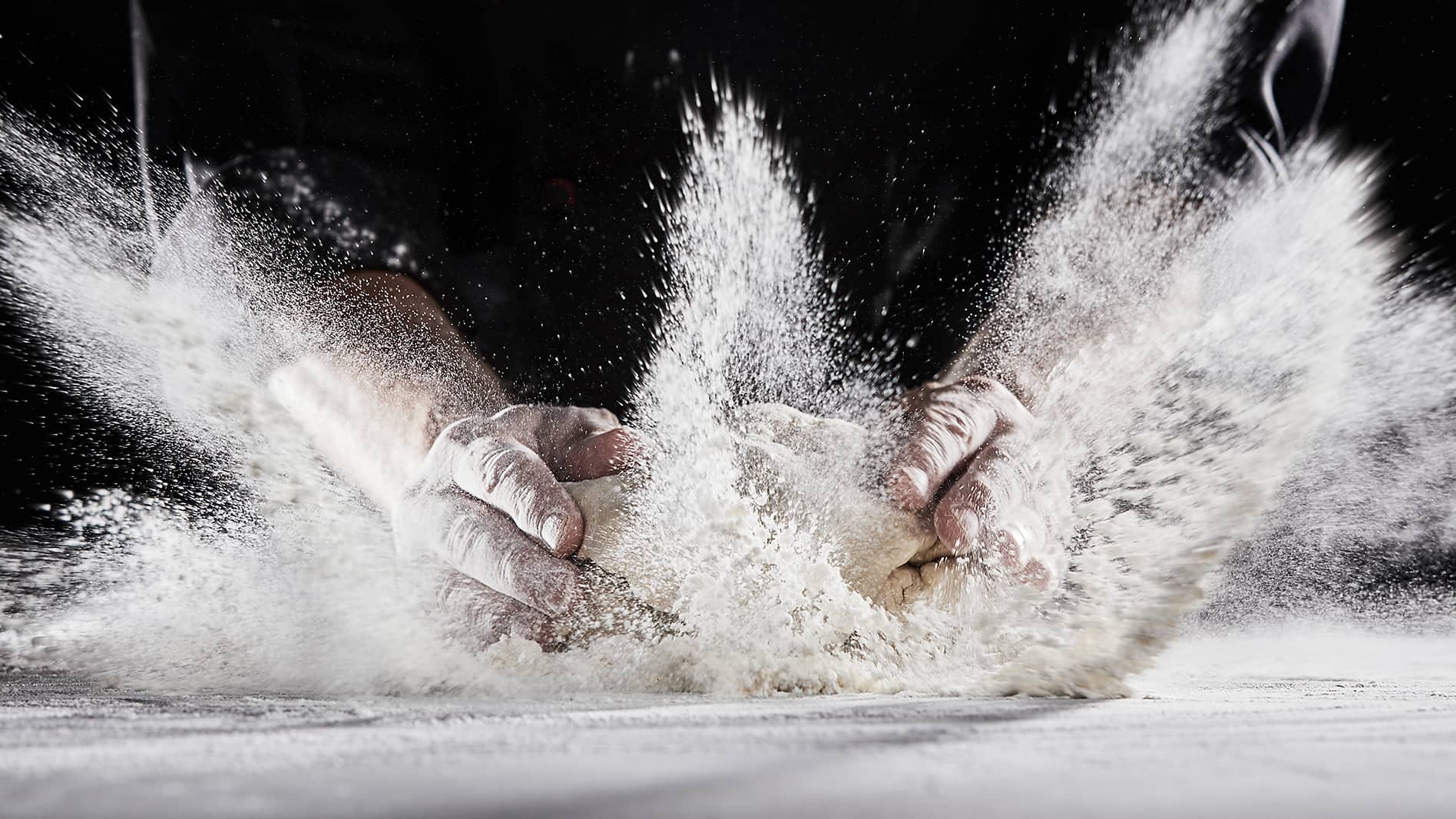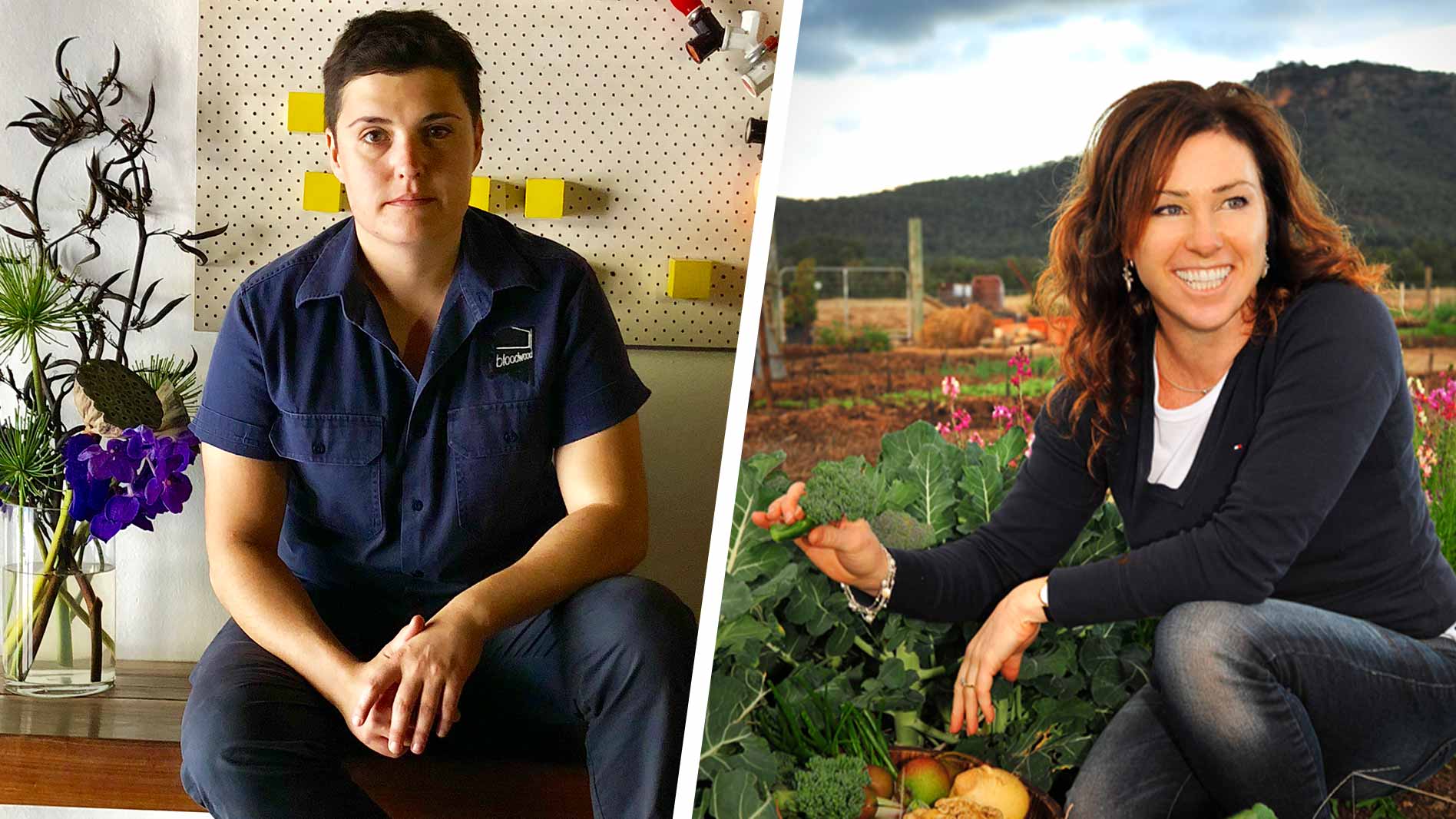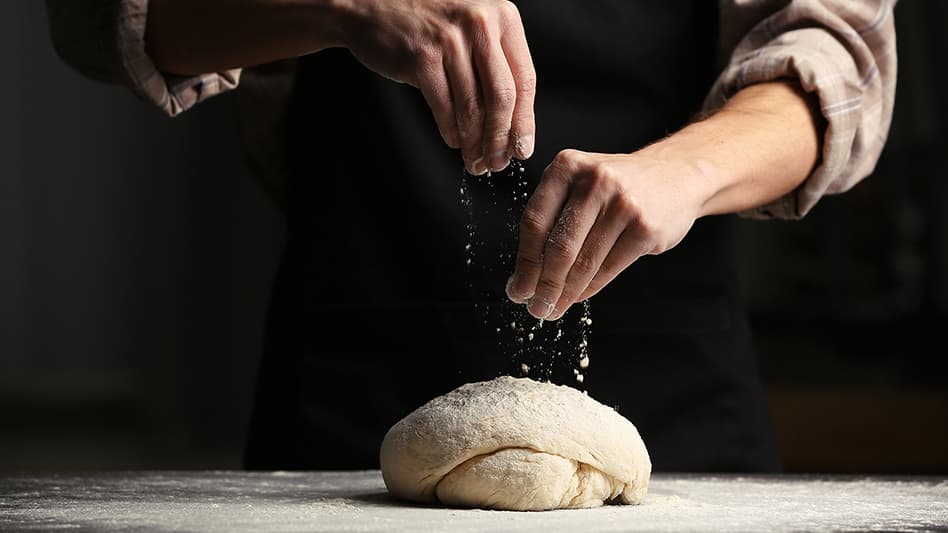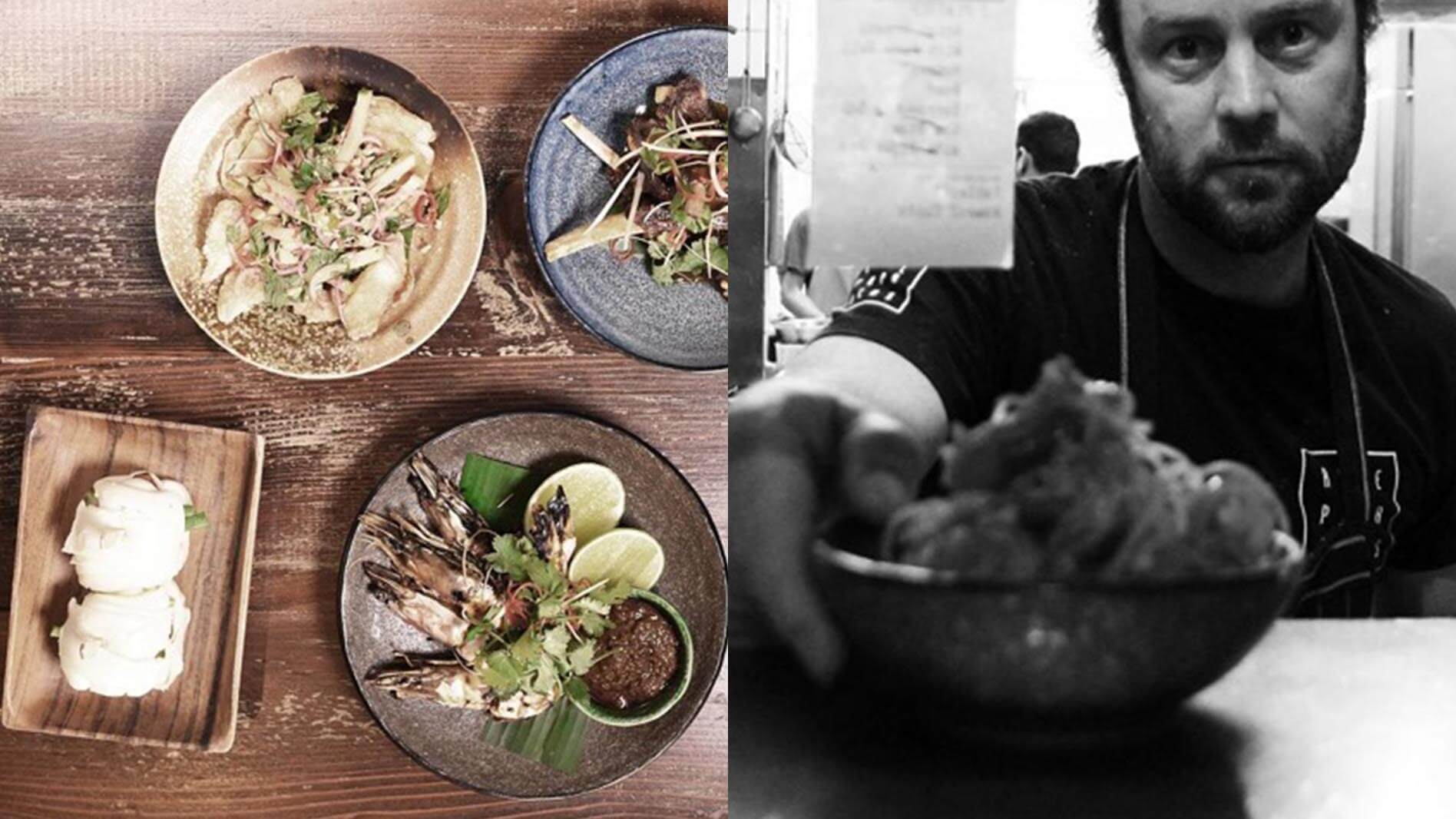Be inspired with recipes created by chefs.
Sign up for updates about products, special offers, news and promotional materials from Goodman Fielder.

Summary
The creation of perfectly crafted breads, cakes and pastries is often referred to as an art-form by the casual consumer. The vision of bakers throwing flour in the air as they dramatically entwine their croissant dough may sound romantic, however in reality, the methods and techniques that go into the baking of such delicate creations often resemble more of a science experiment. Do you use oil, water or milk? Which flour best works? Do you need yeast, salt or spices? There are so many variables and what-ifs, while the months of trialling, testing, tweaking and perfecting are performed with a diligence of scientific precision, rather than sweeping creativity. So, how exactly do you use shortening in baking?
When it comes to creating beautifully golden, tasty foods, the science is supported by one simple ingredient – baking shortening. So, what is baking shortening? How does it stack up against butter or liquid oils? Can it really make or break a dish and what should you be using?
Shortening is a fat product that can be made 100 percent from vegetable fats and oils. It is commonly used to replace butter within baking procedures and is dairy free. The lack of water content within shortening reduces the risk of products going soggy, ensuring they remain crunchy and sturdy for longer periods. Unlike oil, shortening remains solid at room temperature allowing it to be stored and stacked within pantries and throughout the kitchen; whilst butter is solid, it cannot withstand long periods of pastry processing, such as rolling and folding.
From creating chocolate and confectionery items to baking sweet or savoury goods and even frying foods, shortening can be used in a number of different ways throughout a commercial kitchen. More often than not, it is added to recipes that require batters and doughs, as well as dessert fillings, creams and sauces as it can be melted, softened and creamed.
Overall, shortening in baking provides goods with an element of formation and texture that oil can’t. The high fat content in shortening contributes to the moistness of goods providing them with a softer, fluffier texture. While ensuring the consistency of goods is up to standard, shortening also contributes to the golden colouring of baked dough, as well as the thick creaminess of fillings and ganache recipes.
As an added bonus to prolong the product’s life, shortening prevents staling of baked products as the fat content delays the process of gelatinisation of starch, as well as hard, crumbling textures. So, while chefs and bakers continue to opt for shortening products for their mouth-watering dishes, deciding what type to use and when still requires careful consideration. So, we’ve broken them down to help guide your next creation to success.
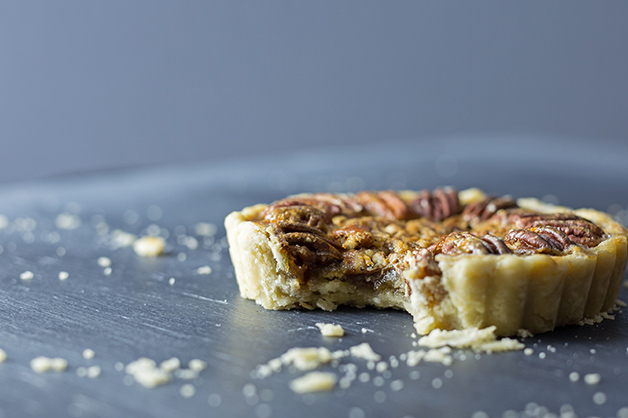
1. Bread shortening
Aids in trapping moisture and lubricating the gluten structure to deliver soft textured bread.
Best use: artisan bread loaves, rolls, pie bottoms, muffins, buns, donuts.
2. Pie base shortening
Assists in lubricating the gluten structure to deliver soft textured finished pastry. Also helps with laminating the dough.
Best use: pie bottoms, bread loaves, rolls, muffins, buns, donuts.
3. Creaming shortening
Contains specially selected emulsifiers that improve aeration and create light, stable mock creams and toppings for desserts.
Best use: mock cream, icing, cream fillings and toppings, cake and muffin decorations, butter style creams.
Alongside shortening, baking margarine is a cost-saving ingredient (when compared to butter) that is also used amongst chefs and bakers for their baking procedures. With the product being dairy free, it is commonly utilised for goods that need to be vegan and vegetarian-friendly. Baking margarine can fulfil most tasks within the kitchen and is a pantry essential for those presenting deliciously baked goods. Here’s what’s currently available on the market and where they can be used within your baking steps.
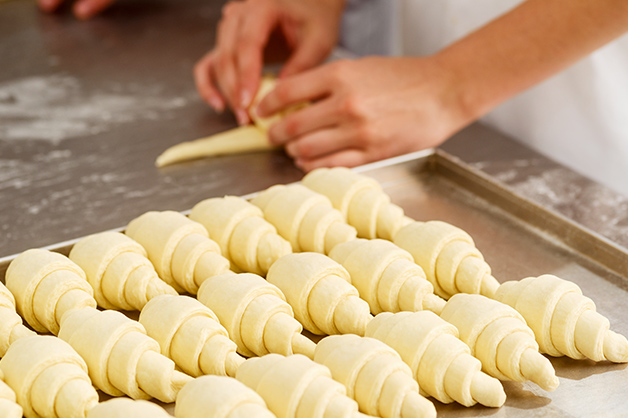
1. Puff pastry margarine
Develops an elastic texture and smooth consistency that aids in stretching, folding and rolling of pastry sheets. Also delivers excellent flakiness and lightness for all applications.
Best use: pie tops, turnovers, puff pastry sheets, pastry shells, sausage rolls, pastries.
2. Danish pastry margarine
Offers an ease of use at ambient temperatures while also forming good plasticity to prevent tearing during sheeting procedures.
Best use: Danish pastries, croissants.
3. Shortpaste margarine
Texturised to minimise gluten development to produce a short dough, while offering strong dispersion and a natural buttery flavour.
Best use: shortbread biscuits, tart shells, shortcrust pastry, slices, biscuits and cookies, pie bottoms, Danish pastries.
4. Cake margarine
Develops a great crumb structure, aeration and mouthful. Delievers a distinct butter bake through flavour and its high creaming power results to maximum volume yields.
Best use: cakes, slices, biscuits, cookies, cream fillings, toppings, icing, choux pastry
Thanks to its ability to deliver golden, tasty goods every time, shortening in baking has been the preferred choice of product by bakers and chefs for some time. With its easy storage ability, as it remains solid at room temperature, shortening also has the ability to be melted, softened and creamed, just like butter but without the dairy and water ingredients. From being used as an ingredient combiner for dough and batter mixtures, shortening can also be utilised for icings, cream fillings and sauces – making it an ingredient that can be used across the menu in numerous ways.
Related Ideas
4th April 2023
Women in hospitality: How Claire Van Vuuren and Lisa Margan became successful chefs and businesswomen
To celebrate women in hospitality, successful chefs and businesswomen Claire Van Vuuren and Lisa Margan share their stories on reaching the top.
25th March 2023
A Chef’s Guide to Gluten Free Baking
Want to know how to turn your bakery goods into a gluten free delight? Check out our gluten free baking guide now.
25th March 2023
The Importance of Mentorships in Hospitality
The hospitality industry is changing at a pace we have never seen before. To make these challenging times slightly easier, a greater emphasis needs to be placed on mentoring and training the younger generation of chefs to ensure the future of hospitality is stronger than ever before.
